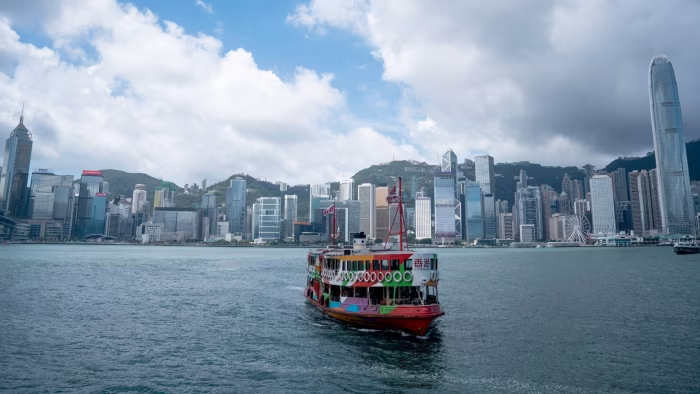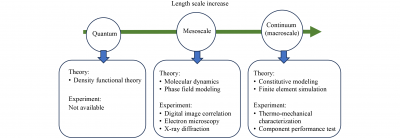CANBERRA, Oct. 24 (Xinhua) — The Australian government said on Friday that scientists have observed signs of the deadly H5 strain of avian influenza in elephant seals on a sub-Antarctic island.
The Department of Climate Change, Energy, the…
CANBERRA, Oct. 24 (Xinhua) — The Australian government said on Friday that scientists have observed signs of the deadly H5 strain of avian influenza in elephant seals on a sub-Antarctic island.
The Department of Climate Change, Energy, the…

China’s overseas lending in renminbi is soaring, as Beijing steps up its efforts to expand the currency’s role in international finance and reduce the country’s exposure to the US dollar.
External renminbi loans, deposits and bond investments by Chinese banks quadrupled to more than Rmb3.4tn ($480bn) over the past five years, as policymakers more aggressively pursue their long-term goal of reducing the centrality of the dollar in global financial flows.
As part of this campaign, China is also opening more channels for foreign investors to buy renminbi-denominated bonds. But officials have focused their efforts on boosting the renminbi’s role in trade, partly as a defence against policies enacted in the US and elsewhere that weaponise the dollar — such as this week’s EU sanctions targeting Chinese banks accused of helping Russia to secure weapons parts overseas.
“From China’s perspective, [settlement in renminbi] is important because it shows that no matter what happens, it can still trade,” said Adam Wolfe, emerging markets economist at Absolute Strategy Research in London.
Recent data from China’s State Administration of Foreign Exchange shows the external fixed-income assets of Chinese banks more than doubling over the past decade to more than $1.5tn, with the share denominated in renminbi expanding rapidly to almost $484bn at the end of June. This includes $360bn of renminbi loans and deposits, up from $110bn in 2020.
Similarly, the Bank for International Settlements estimates that overseas bank lending in renminbi to borrowers in developing countries rose by $373bn in the four years to the end of March.
“The year 2022 marked a turning point away from dollar- and euro-denominated credit and towards renminbi-denominated credit” to such borrowers, the BIS said.
With interest rates in China relatively low, sovereign borrowers including Kenya, Angola and Ethiopia have converted old dollar debts into renminbi this year. Indonesia and Slovenia recently announced plans to issue renminbi bonds, and last month Kazakhstan’s development bank sold a Rmb2bn offshore bond at a yield of just 3.3 per cent.
A big part of the expansion in renminbi lending has been in trade finance. Data from cross-border payments system provider Swift shows that the renminbi’s share of global trade finance quadrupled over the past three years to 7.6 per cent in September, making it the second most-used currency in trade finance after the US dollar.

China has further bolstered the use of the renminbi overseas through a network of offshore clearing banks, both Chinese and foreign, and through swap lines with trading partners around the world.
It comes as Beijing has pushed the use of its own cross-border payments system, Cips, where the value of transactions has risen from a negligible amount a decade ago to more than Rmb40tn in every quarter since the start of last year.
Cips transactions have expanded even as the renminbi’s share of global payments on the Swift system has fallen. Bert Hoffman, a professor at the National University of Singapore’s East Asian Institute, said this most likely indicated a migration of payments to the Chinese system — furthering Beijing’s desire to move away from a dollar-based global monetary system to a multi-polar one.
Chinese officials believe that “a dollar-based system is inherently unstable and has disadvantages that a multicurrency system would not have,” Hoffman said.
Chinese customs data suggests such plans are advancing. It shows the value of Chinese trade transacted in renminbi soaring to more than Rmb1tn a month over the past decade, with about 30 per cent of China’s trade and more than half of its cross-border transactions now settled in renminbi.
China’s capital controls, however, have long hindered the renminbi’s international appeal — according to the IMF, it made up just 2.1 per cent of official reserves at the start of this year. One problem is a lack of readily available renminbi assets.
Policymakers are moving to address this. Hong Kong authorities have embarked on a plan to make the city a hub for fixed income and currency trading. Simultaneously, Beijing has opened its domestic interbank repo market to foreign investors, allowing them to use renminbi fixed-income assets as collateral for renminbi loans.
The repo initiative “deals with some of the pain points for foreign investors”, said Karen Lam, head of Hong Kong securitisation and derivatives at law firm Simmons & Simmons.
“It only makes sense for investors to allocate more into these assets if they are able to use them for more than just holding and generating an income.”
Last month, Hong Kong authorities announced a “road map” to bolster the city’s markets by supporting issuance and liquidity, particularly in renminbi.
“It’s as significant as what Hong Kong did with the stock connect programmes,” said Paul Smith, head of markets for Japan, north Asia and Australia at Citi, referring to the channel connecting the Hong Kong stock exchange to mainland bourses. “Ultimately, it will accelerate the renminbi as a funding currency.”
Over the summer, Beijing broadened the scope of its bond connect programme to allow more mainland Chinese investors to invest in Hong Kong’s fixed income market, which Smith said connects offshore issuers of renminbi debt with a “deep pool of renminbi liquidity”.
Experts agree that China has little interest in the renminbi taking the place of the US dollar in the global financial system. But by boosting the renminbi’s involvement in international trade and investment, “China may get the best of both worlds,” said Smith at Citi.
Beijing’s policies are bringing that target into view, analysts say.
“The policy is moving very gradually, but all of the elements that would make a much more rapid internationalisation work — they’re falling into place,” said Hoffman.
Additional reporting by Joseph Cotterill in London

Frontline healthcare workers struggling with depression after the COVID-19 pandemic experienced significant relief from a treatment combining psilocybin group therapy with mindfulness training, according to a new study from Huntsman…

Men whose prostate cancer returns after surgery or radiation therapy may now benefit from a new drug combination shown in clinical trials to cut the risk of death by more than 40%.
The combination therapy, which adds a drug called…

Oct. 23 (UPI) — SpaceX launched a Spanish communications satellite atop a Falcon 9 rocket Thursday night from Cape Canaveral Space Force Station in Florida in a rare expendable mission.
The rocket deployed the SpainSat NG 2 satellite about 35…

Kim Kardashian has revealed that she has been diagnosed with a brain aneurysm.
The 45-year-old appears to suggest her small…

North have been bolstered by the return of four Western
Force players including Wallaroos superstar Trilleen Pomare for Game 2 of the
North vs South Women’s Series at Perth Bayswater on Saturday 11am.
Hannah Palelei, Anneka Stephens and Brooklyn…

In the fields of civil engineering, aerospace, biomedical engineering, and more, shape memory alloys (SMAs) have garnered widespread attention owing to their distinctive properties. Among them, nickel-titanium (NiTi)…

Last Updated: 2025.10.23
Brand recognition continues to rise internationally in 2025, following debut on
Kantar’s prestigious BrandZ Global Top 100 list of world’s most valuable brands
FAST RETAILING CO., LTD.
to Japanese page
Fast Retailing brand UNIQLO has been included for the first time in global brand consultancy Interbrand’s Top 100 Best Global Brands list, one of the world’s most influential brand rankings. UNIQLO entered in the top half of the list, at rank 47, with a brand valuation of $17.7 billion. The announcement follows UNIQLO’s debut earlier in the year in market research agency Kantar’s prestigious BrandZ Global Top 100 ranking, alongside being named Kantar’s ‘Breakthrough Brand’ at its annual Brand Blueprint Awards, confirming its rising recognition and popularity internationally.
Commenting on the announcement, Fast Retailing Co. Ltd. Group Senior Executive Officer Koji Yanai said, “We are pleased to be included for the first time in Interbrand’s prestigious Best Global Brands ranking for 2025. This international recognition brings us great joy, as it indicates there are UNIQLO fans around the globe who appreciate LifeWear – simple, high-quality, timeless clothing designed to make everyday life better. We are deeply grateful to our customers everywhere for their continued support of UNIQLO.”
Each year, Interbrand’s ranking analyses the world’s top global brands, evaluating them according to financial performance, international presence, and brand awareness and strength, which takes into account customer loyalty. In this year’s analysis, Interbrand noted that UNIQLO is a brand that is uncompromisingly focused on meeting the needs of its customers, working to continually reaffirm its place in their lives.
The recognition follows UNIQLO’s receipt of the Breakthrough Brand award at the second annual Kantar Brand Blueprint Awards, in June. The award identifies the brand that has achieved rapid growth with the most meaningful differentiation from others, achieving the triple crown of combining “meaning”, “difference” and “salience” on a global scale. In 2025, UNIQLO also debuted on Kantar’s BrandZ Global Top 100 list of the world’s most valuable brands, entering at rank 97.
Recognition in these prestigious global awards represents the increasing worldwide appeal of UNIQLO’s LifeWear concept of making everyone’s life better through clothing. From its first store opening in Hiroshima, Japan, in 1984, UNIQLO today operates more than 2,500 stores in 26 countries and regions around the globe.
Top of page

NEW YORK – Researchers have unearthed a spooky pair of dinosaur mummies that seem to have been preserved in an unexpected way.
These dinosaur remains are different from the wrapped mummies of Egypt or natural human mummies that get…